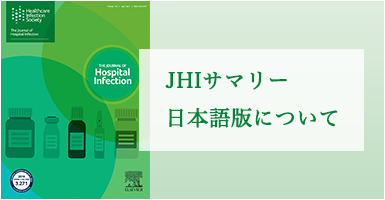空中病原体の効果的な除去:エアロゾル化した結核菌(Mycobacterium tuberculosis)および SARS-CoV-2 に関する ZeBox 技術を用いた研究★
Efficient elimination of airborne pathogens: a study on aerosolized Mycobacterium tuberculosis and SARS-CoV-2 using ZeBox technology R. Narayan*, D. Kundu, A. Ghatak, S. Tripathi, S. Datta *Indian Institute of Science, India Journal of Hospital Infection (2022) 129, 17-21
背景
多元的なエビデンスにもかかわらず、浮遊性微生物の安全かつ効果的な除去は、依然として重要な科学的課題である。ZeBox 技術は微生物のゼータ電位を活用し、非イオン化電場を殺菌性表面と組み合わせて用い、流動する空気から微生物を抽出・除去する。
目的
管理された条件下で、エアロゾル化した重症急性呼吸器症候群コロナウイルス-2(SARS-CoV-2)および結核菌(Mycobacterium tuberculosis)に対する ZeBox 技術を評価すること。
方法
本研究では SARS-CoV-2 および結核菌 H37Ra を用いた。個別の微生物は、気密試験室内でコリゾンネブライザーを用いてエアロゾル化した。様々な時点で、試験室から混合セルロースエステル膜に空気サンプルを採取し、計数に用いた。SARS-CoV-2 は定量的逆転写 PCR(qRT-PCR)を用いて計数したのに対し、結核菌 H37Ra は標準的な微生物学的方法を用いて定量化した。
結果
試験室内で、エアロゾル化した生存微生物数として SARS-CoV-2 は約 10E9、結核菌 H37Ra は約 10E6 を確立した。理想的な条件下では、浮遊微生物数は定常状態の水準であり、SARS-CoV-2 は 10E9、結核菌は 10E6 であった。ZeBox 技術対応機器を作動させた時、微生物数は著しく減少した。短期間のうちに、結核菌は約 10E4.7 の減少が確認されたのに対し、SARS-CoV-2 は約 10E7 の減少が確認された。空中の SARS-CoV-2 量の減少は、それぞれ蛍光分析と qRT-PCR 法を用いて、定性的および定量的に測定した。
結論
今回の検証により、世界中で何百万もの生命を奪う 2 種の最悪の微生物に対する開発技術の有効性が示された。既存の報告と併せて、この検証により ZeBox 技術の真に広域なスペクトルの除去能力が証明された。
監訳者コメント:
ZeBox 技術とは、粒子がもつゼータ電位を利用して、空気中の浮遊微粒子(結核菌や SARS-CoV-2)を、電場を利用して捕捉し、立体的にコーティングされた四級アンモニウム塩との相乗作用により殺滅効果を発揮するものである。これまでの HEPA フィルター、オゾンや UVGI 等がもつデメリットを解消できる新たな空気中の微生物の殺滅技術として、今後の応用が期待される。
同カテゴリの記事
Ethanol and isopropanol inactivation of human coronavirus on hard surfaces
- Meyers*, R. Kass, D. Goldenberg, J. Milici, S. Alam, R. Robison
*Pennsylvania State College of Medicine, USA
Journal of Hospital Infection (2021) 107, 45-49
Key predictors and burden of meticillin-resistant Staphylococcus aureus infection in comparison with meticillin-susceptible S. aureus infection in an Australian hospital setting S. Miyakis*, S. Brentnall, M. Masso, G. Reynolds, M.K. Byrne, P. Newton, S. Crawford, J. Fish, B. Nicholas, T. Hill, A.M. van Oijen, on behalf of the Wollongong Antimicrobial Resistance Research Alliance (WARRA) and One Health Understanding Through Bacterial Resistance to Antibiotics Knowledge (OUTBREAK) Consortium *University of Wollongong, Australia Journal of Hospital Infection (2022) 129, 41-48
Comparison of droplet spread in standard and laminar flow operating theatres: SPRAY study group
R. B. Newsom*, A. Amara, A. Hicks, M. Quint, C. Pattison, B.R. Bzdek, J. Burridge, C. Krawczyk, J. Dinsmore, J. Conway
*University of Portsmouth, UK
Journal of Hospital Infection (2021) 110, 194-200
Molecular epidemiology of meticillin-susceptible Staphylococcus aureus in the neonatal intensive care unit Y. Toyama*, K. Hisata, Y. Kasai, S. Nakano, M. Komatsu, T. Shimizu *Juntendo University, Japan Journal of Hospital Infection (2022) 129, 75-81
Detection of carbapenem-resistant hypervirulent Klebsiella pneumoniae ST11-K64 co-producing NDM-1 and KPC-2 in a tertiary hospital in Wuhan Y. Huang*, J. Li, Q. Wang, K. Tang, X. Cai, C. Li *Renmin Hospital of Wuhan University, China Journal of Hospital Infection (2023) 131, 70-80



